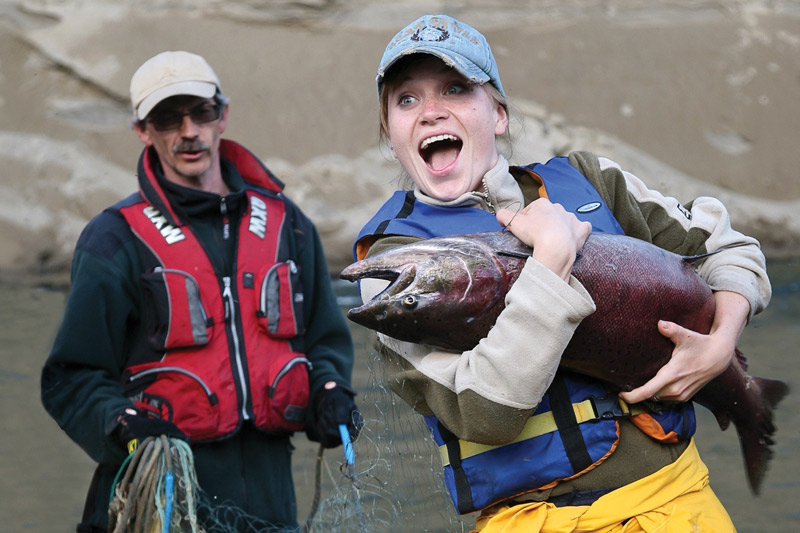 After much debate over the looming threat of declining salmon populations, the Pacific Fishery Management Council came to an agreement for the 2018 fishing season that aims to meet conservation goals for wild fish while also providing fishing opportunities on healthy salmon runs.
After much debate over the looming threat of declining salmon populations, the Pacific Fishery Management Council came to an agreement for the 2018 fishing season that aims to meet conservation goals for wild fish while also providing fishing opportunities on healthy salmon runs.
Chinook and coho salmon are expected to have low return rates to Washington rivers this season. The culprit? It’s unfortunately not one but a series of contributing factors. Unfavorable environmental conditions over the years have resulted in loss of salmon habitat – severe flooding and warm ocean waters have affected these areas, reducing the number of returning salmon over time.
Additionally the “population explosion” of seals and sea lions “and the needs of the endangered southern resident killer whales are the real challenges facing us today,” states chair of Northwest Indian Fisheries Commission Lorraine Loomis.
Ron Warren , head of the Washington Department of Fish and Wildlife’s (WDFW) fish program, dwells on this ongoing loss. “It’s critical that we ensure fisheries are consistent with ongoing efforts to protect and rebuild wild salmon stocks,” he urges. But even with these recovery efforts, salmon habitats continue to decline.
These low return rates prompted state and tribal fishery managers to come together to protect these wild fish that are a part of the Pacific Northwest’s identity. Fishing opportunities will be limited in many areas. One such outcome, for example, will be fewer opportunities for recreational anglers to fish for Chinook off Washington’s coast and along the Columbia River. To protect weak stocks, tribal fisheries will also be restricted in certain areas. Another result will be limited fisheries in areas where southern resident killer whales typically feed. This will minimize the negative effects of boat presence and noise, as well as decrease competition for Chinook and other salmon varieties in areas critical to declining whale populations.
Washington’s ocean water Chinook catch quota for the 2018-2019 season is 27,500 fish. At last year’s quota of 45,000, recreational fishers are looking at a quota drop of 60 percent this season. Last year’s quota of 42,000 coho will follow anglers into this season with no quota cuts. Navigate to the WDFW website for a preview into the 2018-2019 season. You can read up on additional quotas and opening days for locations in Puget Sound, Grays Harbor, Willapa Bay, and the Columbia River. Information will be available in the 2018-2019 Washington Sport Fishing Rules pamphlet in June.